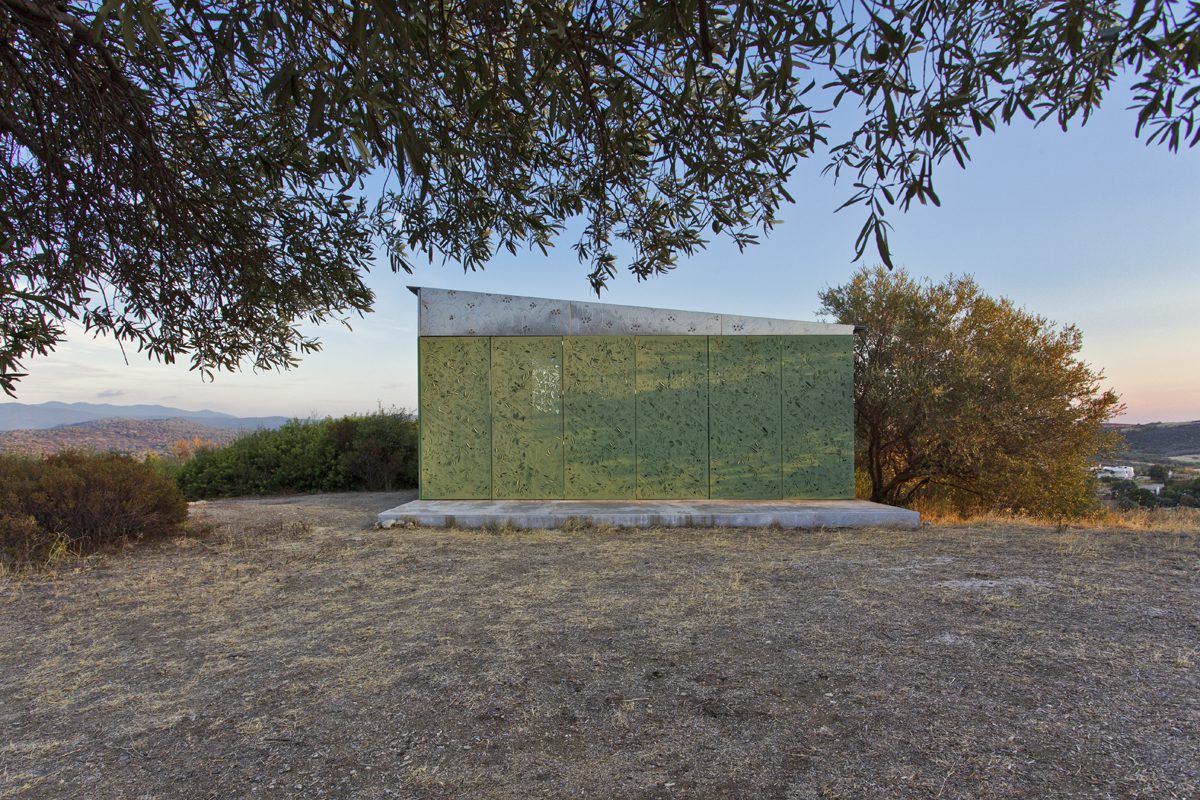Digital fabrication and hand craft are combined to make a textured, perforated metal wrap for a house designed by Eva Sopéoglou
Designed by London-based architect Eva Sopéoglou, the Olive Tree House on Halkidiki, Greece, is a weekend home on a hilly olive grove, looking out to the sea and beyond towards the monasteries of Mount Athos.
Its design reponds carefully to the changing position of the sun to provide shading and complement the views. The three by seven-metre plan is aligned to the cardinal points, and the spaces are connected by a corridor that aligns with adjacent olive trees “which, thus, become integral to the house’s layout”, says Sopéoglou, whose doctoral research at the Bartlett covers similar territory.
The external envelope is a veil-like wrap of lightweight movable metal panels, perforated with patterns inspired by the shade of olive trees. Throughout the day, the interior spaces are filled with ever-changing shadows.
All components were prefabricated, and the envelope was made using a combination of digital CAD/CAM technology and hand craft. Sopéoglou collaborated closely with metal fabricator Metalso to develop a process which was “customisable, yet economical and permitted an expressive effect”.
Perforations and folds were made using a high-quality industry-standard sheet metal CNC-punching machine. Each panel used a single sheet of galvanised metal and received a powder-coat paint finish. The sheets were machine-perforated, then partly CNC-folded and also hand-folded to produce a three-dimensional texture.
The punched perforations were produced by a limited set of cutting tools, used in combination to create 30 motifs which were all employed to make the patterns on each sheet in order to avoid repetition and give maximum variation. “Because of their complexity, each pattern was laid directly in the cutting machine’s CAD/CAM software environment to generate the G-code, the processing of which took many hours for each sheet produced”, says Sopéoglou.
“Throughout the surface, one can see the small openings that mimic the leaves of the olive tree. The pattern is so elaborate that it looks as if it has been embroidered on the sheet metal. Most perforated sheets are two-dimensional, but this surface has three dimensions. It’s textured, and the soft, thin, pliable metal looks like a fabric.”
Though the making of the panels relied on sophisticated digital technology, the process was surprisingly similar to traditional forms of production, says Sopéoglou. “Digital fabrication and manufacturing are often perceived as automated processes, where the hand, the eye and the mind of the person operating the machines remain invisible”, she says. “On the contrary, on the workshop floor I found that digital fabrication is just as much a creative craft as working by hand or using analogue tools, and the fabricator is as much a designer as the architect.”
























